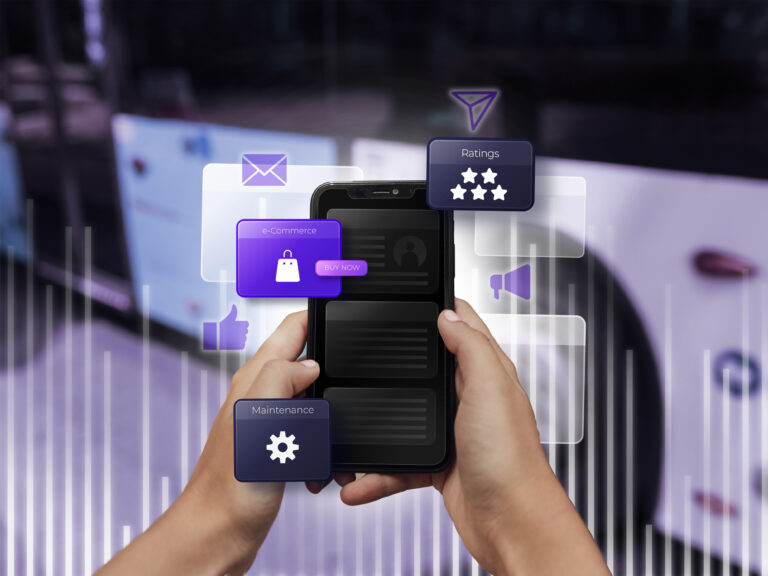As consumer preferences shift towards digital channels, a well-designed retail app can be a game-changer for corporations looking to enhance their reach and customer engagement. In this guide, we’ll explore the step-by-step process behind building a modern retail app with an outstanding user experience.
Understanding the market and defining your key objectives
Thorough market research is vital before beginning development. Identify your target audience, analyze competitors, and pinpoint the unique selling points that will set your retail application apart. Clearly define your business objectives and key performance indicators (KPIs) to guide the development process effectively.
Choosing the right platform
Decide whether you want to develop a native app (iOS or Android) or opt for a cross-platform solution. Native apps offer better performance and access to platform-specific features, but require separate development for each platform.
With cross-platform frameworks, you can build a single codebase that works on multiple platforms. This reduces development time and costs, but may also limit performance. Unless the desired set of features requires native development to work smoothly, both options must be carefully evaluated.
Designing a user-centric interface
User experience (UX) and user interface (UI) design can make or break your retail app. Wireframes and prototypes are key tools that let you visualize the app’s layout, navigation, and overall design. Ensure that the interface is intuitive, visually appealing, and aligned with your brand identity. Consider factors such as easy navigation, clear calls-to-action, and a seamless checkout process.
Integration of essential features
To be successful, a retail application must offer a range of features that enhance the user experience. Here are some of the essentials:
Product catalog: Categorize products and provide detailed descriptions, high-quality images, and pricing information.
User accounts: User registration and authentication enable personalized experiences, such as shopping history and saved preferences.
Search functionality: Robust search features allow users to quickly find products through keywords, categories, or other filters.
Shopping cart and checkout: A user-friendly shopping cart and a secure checkout system streamline the purchase process. Include multiple payment options for convenience.
Push notifications: Timely notifications about promotions, discounts, and order updates keep users engaged.
Social media integration: Enable users to share their favorite products on social media platforms and log in using their social media accounts for a seamless experience.
Reviews and ratings: Allowing customers to review and rate products fosters trust – and helps other users with their purchasing decisions.
Modern consumers expect a cohesive multi-channel experience, so features should also enhance in-store shopping. Integrate the following functionalities to cater to a diverse set of customer requirements:
Scan & Go: With Scan & Go, customers can scan product barcodes using their smartphones and make instant purchases within the app, skipping the conventional checkout process. This enables a seamless shopping experience, reduces queues, and clears out floor space that can be used to broaden product offerings. All these measures significantly increase customer satisfaction and loyalty.
Access product information: Scanning a product’s barcode, customers can quickly access all relevant information about the respective product, saving valuable time otherwise spent on browsing the web to find crucial data, such as allergy information.
Personalized promotions: Retailers can deliver promotions based on a customer’s shopping cart, purchasing history, or product reviews. This can happen simultaneously with the shopping process, taking into account real-time data.
Product recommendations: Barcode Scanning can also be used to connect the physical and digital world in milliseconds, allowing the mobile app to provide product recommendations based on the item that had just been scanned.
Automated reward system: Customers can be rewarded for using modern technology like Scan & Go, enabling them to collect bonus points through every barcode they scan. Additionally, they can unlock promotions based on their current shopping carts.
Customer feedback: Once a customer has scanned a specific barcode, they do not only receive product information, they also gain access to customer reviews. Of course, they can also submit feedback on products or the in-store experience directly through the app.
Backend development and database integration
The backend is the core of your retail app, managing data, user accounts, and interactions. Choose a reliable backend framework and database system that can handle the expected volume of users and transactions. For secure and efficient transactions, you have to ensure that payment processing is integrated seamlessly.
Payment gateway integration
Security is a key concern in retail apps, especially when it comes to handling financial transactions. Work with reputable payment gateways to keep sensitive customer information protected. On the other hand, offering a variety of payment options – including credit/debit cards, digital wallets, and other popular methods – allows you to cater to a diverse customer base.
Testing and Quality Assurance
Thorough testing is a crucial phase in the development cycle. Retail apps can have a large and diverse user base, which necessitates continuous testing for functionality, security, and performance. Test the app on different devices and operating systems to ensure compatibility. Identify and rectify any bugs or issues detected during the testing phase to deliver a polished and reliable retail app.
Optimizing performance
Optimize your retail app’s speed and performance to provide a seamless user experience. Compress images, utilize caching mechanisms, and minimize unnecessary features that may slow it down. Consider using a content delivery network (CDN) to ensure quick access to resources regardless of the user’s location.
Securing your retail app
Payment is not the only aspect of a retail app where security is vital. Consumers and regulators increasingly demand robust privacy protections. This includes safeguarding all user data by implementing encrypted storage and transfer. Conversely, users should also be educated on security best practices, such as creating strong passwords and utilizing two-factor authentication where available.
Launch
Once development, testing, and optimization are complete, it’s time to launch your retail app. Publish the app on the chosen app stores (Google Play Store, Apple App Store) and promote its release through various channels. Leverage social media, email marketing, and collaborations with influencers to create buzz and drive initial downloads.
Post-launch support and continuous improvement
Launching your retail app is not the end of the journey – it’s the beginning. Provide ongoing support to address user feedback, bug reports, and feature requests. Monitor app analytics to gain insights into user behavior, popular products, and areas for improvement. Regularly update the app with new features, security patches, and performance enhancements to keep it relevant and competitive in the ever-evolving retail landscape.
Conclusion
Building a retail app requires careful planning, strategic decision-making, and a commitment to delivering an exceptional user experience. By understanding your market, leveraging technology, following security best practices, and prioritizing user-centric design, you can create a retail app that not only meets the demands of the modern consumer but also contributes to the long-term success of your business.
Would you like to add reliable Barcode Scanning SDK technology to your retail app? With the Scanbot SDK, you can build a smooth Scan & Go experience. Our experts are looking forward to discussing your use case with you. Let’s talk.
FAQ
What are the benefits of integrating barcode scanning in a retail app?
Barcode scanning enhances the checkout experience and allows customers to quickly access product details. It also improves efficiency, reducing human errors and increasing sales opportunities through easy access to product information and promotions.
How do I choose between developing a native app or a cross-platform solution?
Consider factors like budget, timeline, user experience, and long-term maintenance. Native apps offer better performance and integration with device features, while cross-platform apps are more cost-effective and faster to deploy across multiple platforms.
What are some common mistakes to avoid when designing a retail app?
Common mistakes include neglecting user experience, not optimizing for mobile performance, failing to implement secure payment options, and overlooking user feedback during testing. It’s also important to ensure your app has intuitive navigation and is well-integrated with existing systems. Poorly executed app design can lead to frustration and drive customers away.



